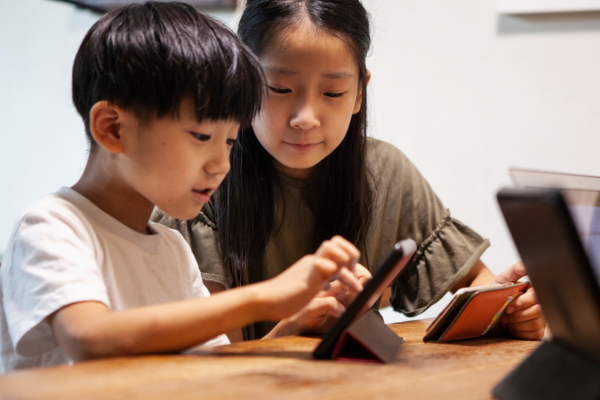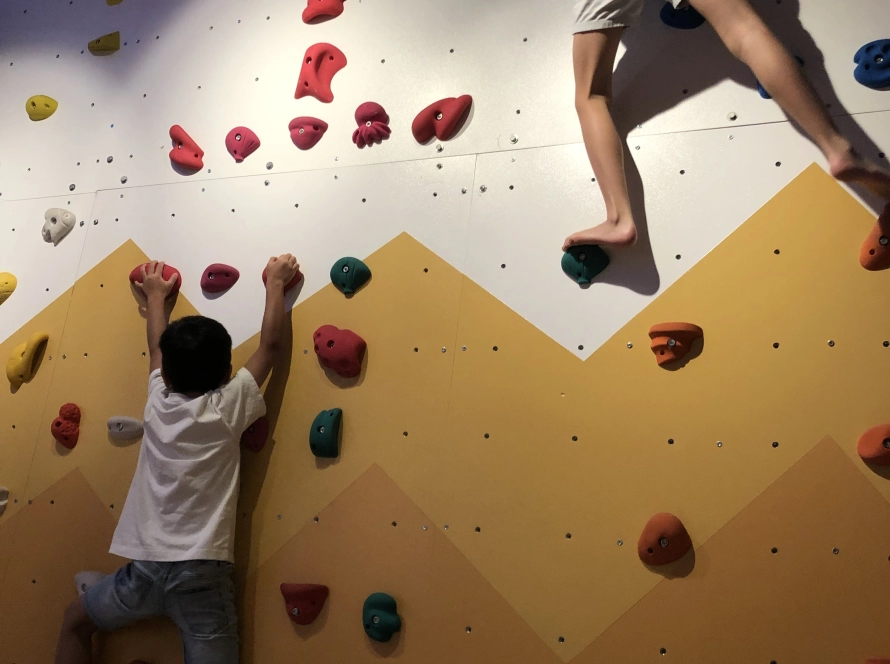
Imagine a world where children with developmental challenges can express themselves, learn, and grow through the power of music. What if the key to unlocking a child’s potential lies in the rhythm of a song or the melody of a tune?
In a world where technology seems to be running the show, how can we make the most of music? It’s simple—let’s use it to our advantage!

Why Music is Pure Magic for Little Learners
Music is the perfect way to balance all that screen time and keep kids engaged in a healthy, fun, and creative way. Like a secret superpower when it comes to early childhood development, music gets kids excited, encourages them to move, and helps them express themselves. It’s like opening a door to learning in a way that feels fun, not forced.
Boosting Brain Power: Sing, Remember, Repeat!
- Language Learning on Repeat: Kids love to sing the same songs over and over, and that’s a good thing! Repetition helps them learn new words and phrases without even realizing it. Singing along to songs with simple, catchy lyrics is a fun way for children to pick up language skills while rocking out.
- Sharpening Focus: Kids with ADHD often struggle to sit still or pay attention, but music gives them a structure to follow. Songs and interactive videos that mix movement and sound can keep their focus and allow them to move.
- Problem-Solving and Planning: Music-based activities often come with built-in games or rules—like taking turns or predicting what comes next. These help kids practice important thinking skills while they sing and play.

Building Confidence and Connection Through Music
Music isn’t just fun—it’s also a great way to help kids build emotional and social skills. Imagine a shy child singing with their friends or a child with sensory sensitivities finding comfort in a familiar song. Music can make all that happen.
Songs can have a calming effect on kids who get overwhelmed easily. Whether it’s a soft lullaby or a favorite tune, music can help kids feel grounded and safe when things get too much.
Kids also pick up on social cues through musical activities without even realizing it! When they watch others’ facial expressions and body movements during a musical game, they start to get the hang of non-verbal communication—like understanding a smile or a nod. That’s super important for making friends and building social connections.
Additionally, music can break down barriers for children who are non-verbal or struggle with spoken language. Through singing or participating in musical games, they have another way to communicate, share experiences, and connect emotionally with others. Even without words, the rhythm and joy of music can act as a bridge between them and their peers.

The Role of Interactive Videos in Early Intervention
Interactive videos are like the ultimate combo for learning—they mix visual, auditory, and hands-on activities into one fun package, making them perfect for early intervention.
What makes interactive videos so exciting is that they encourage kids to actually do things. They’re not just passively watching; they’re responding to prompts, copying actions, and solving little challenges. This is especially helpful for children with ASD, who might struggle with traditional teaching methods.
And the best part? Interactive videos can be personalized to fit each child’s unique needs. Whether they’re focusing on speech and language, motor skills, or learning to understand emotions, these videos adapt to their pace, giving them the support they need in a way that feels fun and rewarding.
To ensure that children are fully engaged with interactive videos, here are some ways on how educators and parents can take an active role in the learning process:
1) Educators and parents can join in the fun by participating alongside the child. By singing, dancing, and completing tasks together, they can model enthusiasm and encourage children to dive deeper into the activities.
2) Before diving into an interactive video, parents and educators can chat about what the child will learn, framing the session as an exciting adventure. This approach can spark motivation and encourage kids to explore different responses, boosting their creativity and critical thinking.
3) As children engage with the videos, adults should observe their interactions and offer positive reinforcement and gentle guidance. This support helps children feel confident as they navigate the content, making the learning experience more rewarding and effective.
Practical Tips for Using Music and Interactive Videos

When it comes to using music and interactive videos for early intervention, there are plenty of ways to make it enjoyable and effective! Here are some fun tips to get you started:
- Choose Age-Appropriate, Simple Songs: Start with songs that have repetitive lyrics and simple melodies. Classic nursery rhymes or interactive children’s music are great choices.
- Incorporate Movement: Songs that involve clapping, stomping, or dancing can engage multiple senses, making the experience more immersive and helping children with motor coordination.
- Use Visual Aids: If using interactive videos, ensure that they incorporate bright visuals, clear instructions, and engaging characters. This will help keep the child’s attention and make learning more enjoyable.
- Encourage Participation: Whether through a group music session or a one-on-one video interaction, encourage children to participate actively, whether by singing, dancing, or mimicking actions. Active engagement is key to maximizing the developmental benefits.
- Integrate into Daily Routine: Music and interactive activities don’t need to be limited to therapy sessions. Parents can incorporate music into daily routines—such as during playtime, bath time, or bedtime—to reinforce learning and provide comfort.
- Set Healthy Boundaries: While technology can be a great tool, it’s important to set some boundaries. Too much screen time can be overwhelming for young children, so try to balance interactive videos with plenty of hands-on activities and real-life play. Encourage breaks between screen sessions to engage in other fun activities like outdoor play or creative crafts. This balance helps ensure that technology remains a helpful part of their learning without taking over their playtime!
Visit our website, www.oneintervention.org, to access a wealth of resources on early childhood development. We believe that every child deserves the chance to reach their full potential. You can also find us on Instagram and Facebook @oneintervention

